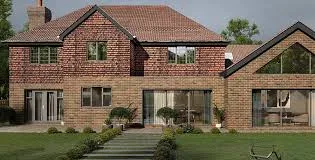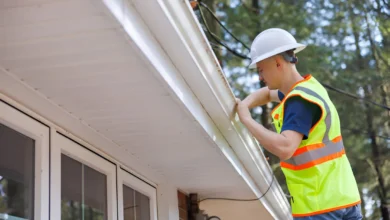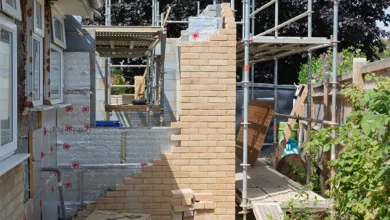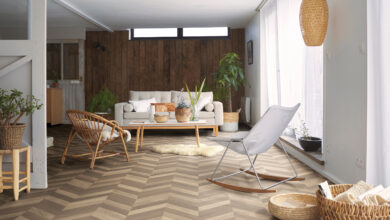Building for the Future: Innovative Materials That Redefine Modern Living Spaces

In the history of contemporary architecture and interior design, there are two qualities that prevail in every single decision- durability and precision in design. The modern homeowner and developer no longer wants to be impressed by a structure that only appears good; he wants materials that are durable, work under pressure and are sustainable in the long run. This change has resulted in incredible innovation in the industry where the latest technology is combined with art.
Among the most exciting advances are carbon crystal doors, which combine futuristic strength with elegant aesthetics, and waterproof sealants, which protect structural elements from moisture, temperature extremes, and wear. These solutions are combined to create the future of living spaces, and they bring beauty that can withstand the test of time. In this article, we will discuss how these materials enhance functionality. So what are you waiting for? Let’s begin with our article!
Carbon Crystal Doors: A New Era in Strength and Style (200–250 words)
The doors were traditionally constructed using wood, glass or metal, all of which had their advantages but also major disadvantages. Now, carbon crystal doors are emerging as a superior alternative, delivering enhanced durability, thermal stability, and visual appeal. These futuristic doors are built with a mixture of high strength carbon and crystalline substances, which makes them look sleek and modern yet structurally sound.
What makes carbon crystal doors stand out is their impressive resistance to warping, cracking, and environmental damage. Unlike wooden doors that swell in humidity or metal doors that corrode over time, carbon crystal doors retain their form, shine, and strength even in harsh conditions. They are also used in high-end contemporary interiors due to their smooth, minimalist finishes, as cohesion of design and innovation of materials are important.
Other than the appearance, these doors enhance the energy efficiency of homes. They are good insulators which assist in the maintenance of the temperatures in the building and save on energy bills used in heating or cooling. Moreover, they are easy to install and safer both at home and in business premises since they are lightweight but durable.
With a growing demand for smart, low-maintenance construction, carbon crystal doors symbolize the next step in architectural evolution. They are not only a visual center of attention but also a useful tool in homes that are future-oriented.
The Science Behind Waterproof Sealants and Their Role in Structural Integrity:
While they may seem like a minor component in construction, waterproof sealants are essential to the long-term health of a building. Such chemical formulations are used on joints, cracks, edges and surfaces to avoid entry of water, air, dust and even pests. In the absence of sealants, walls, floors, and fixtures may become penetrated by moisture-causing rot, mold, or degradation of the structure.
The secret behind waterproof sealant technology lies in its elasticity and adhesive properties. When it is applied, it dries into a rubber-like material that is flexible and expands and contracts with temperature changes, settling movements, or building vibrations. This gives it a degree of flexibility which enables it to seal in a watertight manner even under stress.
Modern waterproof sealants are typically made from silicone, polyurethane, or acrylic blends—each chosen for specific applications. Silicone sealants, as an example, are best applied on non-porous surfaces such as glass and ceramic whereas polyurethane is good on concrete and metal. They are UV resistant, mildew resistant and harsh chemical resistant sealants and are very reliable both indoors and outdoors.
In addition to moisture control, waterproof sealants play an important role in enhancing energy efficiency. By sealing gaps around windows, doors, and HVAC systems, they prevent air leakage and help in keeping interiors more comfortable and reducing reliance on heating and cooling.
From balconies and bathrooms to basements and roofs, waterproof sealants are a silent protector in every corner of a home. Their presence ensures that the modern design remains durable and functional, regardless of the elements it faces.
Enhancing Door Performance with Proper Sealing Techniques:
Even the most advanced door systems, such as carbon crystal doors, require proper sealing to deliver optimal performance. In its absence, air drafts, water infiltration, and energy loss may occur through the gaps between the door and frame, which negates comfort and structural safety. This is where the precise application of waterproof sealants becomes critical.
Adequate sealing is the last line of defence that improves both the functionality and finish. Around carbon crystal doors, high-grade sealants prevent moisture ingress, especially in environments prone to humidity or rainfall. This not only protects the doorframe but also the walls and flooring around. It also aids in maintaining the aesthetic appeal of the installation, so that no water damage or warping takes place with time.
The synergy between carbon crystal doors and waterproof sealants extends to thermal performance. Carbon crystal materials are inherently insulative and coupled with airtight sealing, this forms an energy efficient envelope. This reduces the thermal bridging and assists passive heating and cooling measures, which is an essential characteristic of environmentally friendly building.
Further, the sealing is done well to prevent noise pollution by preventing the transmission of sound through the air which is very important in the case of urban and multi-family housing projects. Doors are more solid, open more easily, and offer greater long term value with quiet, leak-free operation.
Conclusion:
With our shift to more intelligent and sustainable building, the materials we use become the key element in building our lifestyle. Innovations like carbon crystal doors bring a new level of sophistication and resilience to architectural design, while essential technologies like waterproof sealants protect and extend the life of every component they touch.
Collectively, these solutions are indicative of a larger trend in contemporary life, in which performance and aesthetics are no longer distinct objectives, but the two sides of the same coin. When renovating a home or creating a new one, adopting future-proof materials will make your place comfortable, efficient, and aesthetically timeless.
Ultimately, it is not only about what is good in the present, but it is about designing with a purpose in mind for the future.




